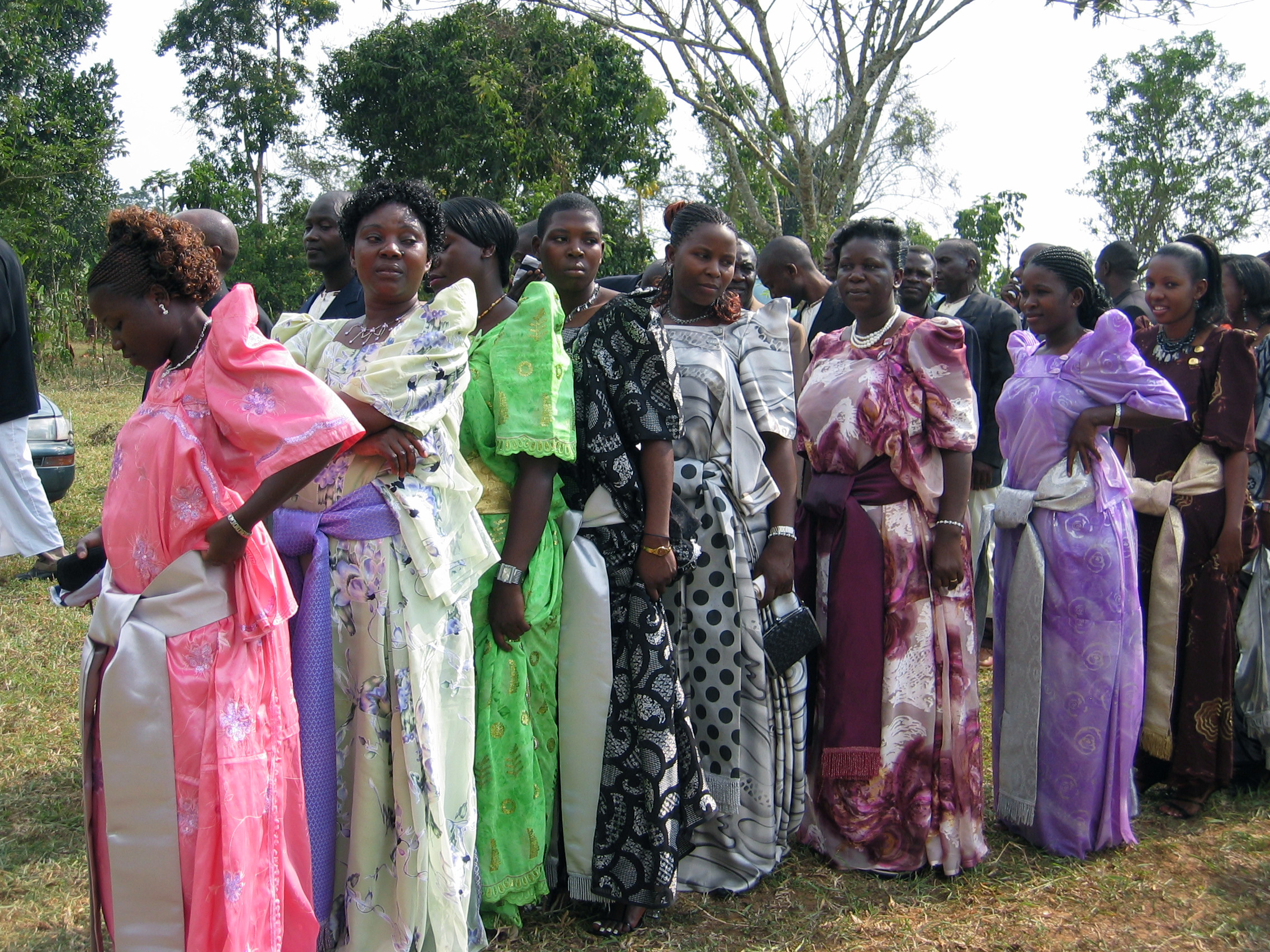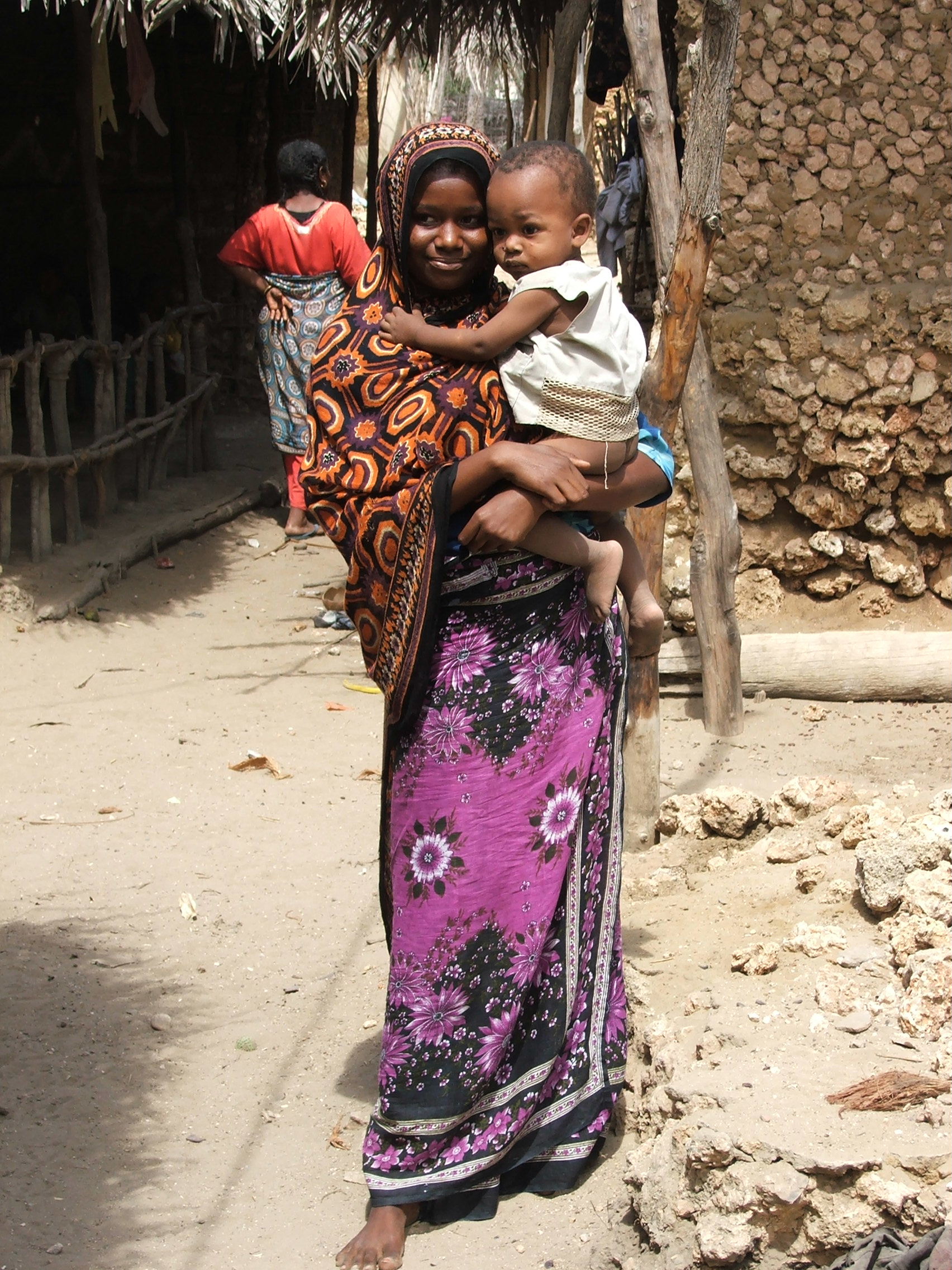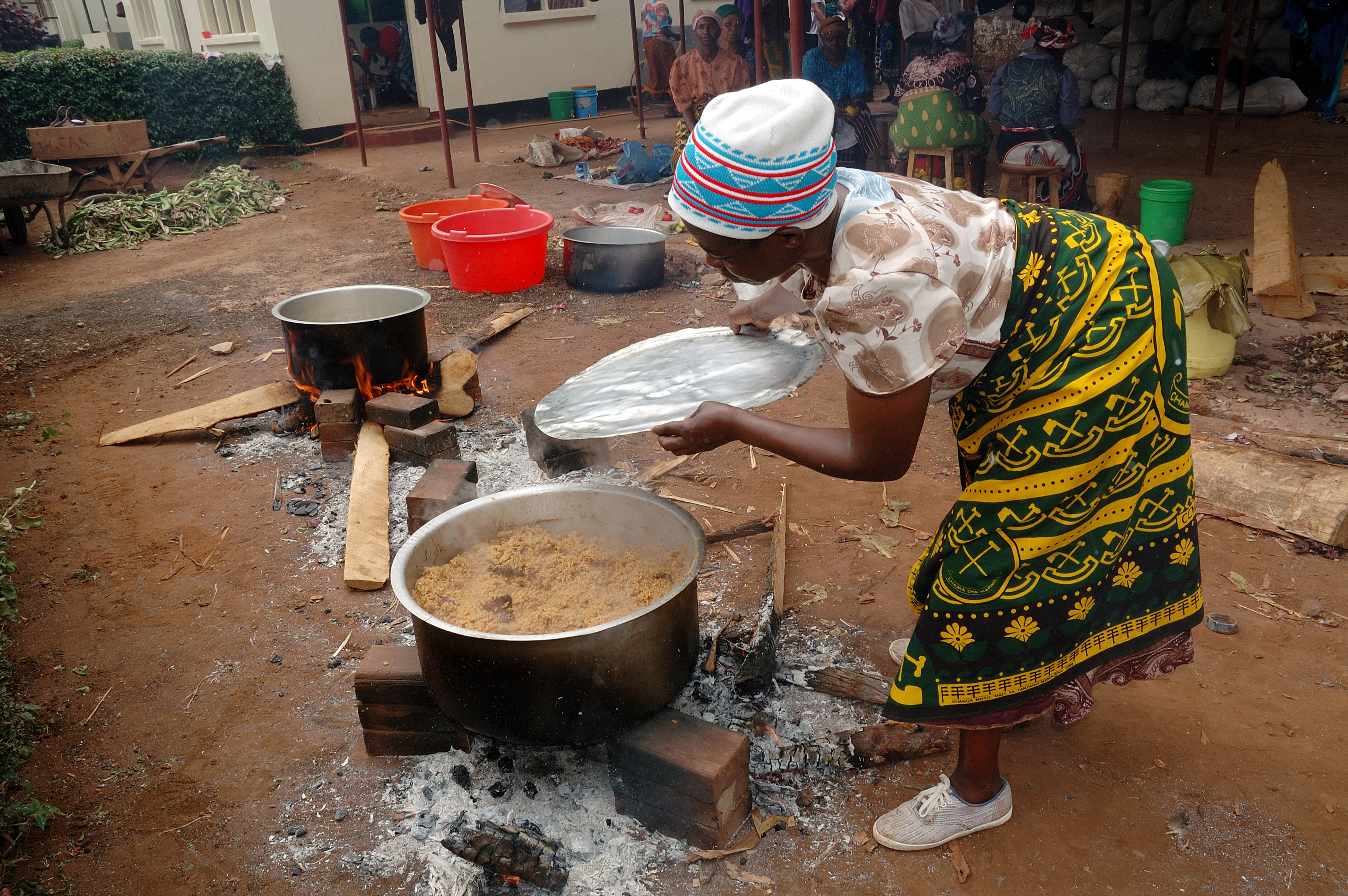|
Gomesi
A gomesi, also known as a Busuuti or Bodingi, is a colorful floor-length dress. It is the most commonly used costume for women in Buganda and Busoga. Traditional male attire is the kanzu. The gomesi has had many changes in its uses and design since its origination. Origins The best scholarship traces the origins of the Gomesi to 1905. The dress was introduced by a Goan designer, Caetano Gomes, then resident in Uganda which was a British Protectorate at the time. The dress did not gain wide use until the wife of Daudi Cwa II of Buganda, the Kabaka, or king over Buganda, wore it at her 18-year-old husband's official coronation (he had been kabaka since age 1) in 1914.Richard J. Reid. ''A History of Modern Uganda''. Cambridge: Cambridge University Press, 2017. p. 40 The gomesi can also be traced back to the former, traditional style of clothing in Uganda called Lubugo, originating in 600 AD. The women of Uganda adopted the gomesi once in was introduced by Europeans. The impl ... [...More Info...] [...Related Items...] OR: [Wikipedia] [Google] [Baidu] |
Kanzu
A kanzu is a white or cream coloured robe worn by men in the African Great Lakes region. It is referred to as a ''tunic'' in English, and as the '' thawb'' in Arab countries. The kanzu is an ankle or floor length garment. It serves as the national costume of Tanzania as well as the Comoros, where it is called a ''kandu'' as well as a ''thawb''. The robe is also worn in some coastal Muslim regions of Tanzania and Kenya. The men of Uganda consider it their most important dress. Kanzu is a Ganda word of Swahili origin, which means "robe" or "tunic". In Tanzania, the term is used interchangeably with kaftan. Ugandan kanzu The Kiganda/Ugandan kanzu was introduced to the Buganda Kingdom by Arab traders. Kabaka Ssuuna was the first Kabaka of Buganda to wear the kanzu. After the Kabaka adopted the attire it became the formal wear of all Baganda men. The kanzu spread from the Baganda people to other ethnicities and is a national costume of Baganda men. (The Republic of Uganda has no pan- ... [...More Info...] [...Related Items...] OR: [Wikipedia] [Google] [Baidu] |
African Clothing
African clothing is the traditional clothing worn by the people of Africa. African clothing and fashion is a diverse topic that provides a look into different African cultures. Clothing varies from brightly colored textiles, to abstractly embroidered robes, to colorful beaded bracelets and necklaces. Since Africa is such a large and diverse continent, Folk costume, traditional clothing differs throughout each country. For example, many countries in West Africa have a "distinct regional dress styles that are the products of long-standing textile crafts in weaving, dyeing, and printing", but these traditions are still able to coexist with western styles. A large contrast in African fashion is between rural and urban societies. Urban societies typically are exposed more to trade and the changing world, while it takes more time for new western trends to get to rural areas. By region In Northeastern Africa, particularly in Egypt, styles of traditional women's clothing have been inf ... [...More Info...] [...Related Items...] OR: [Wikipedia] [Google] [Baidu] |
Folk Costume
Folk costume, traditional dress, traditional attire or folk attire, is clothing of an ethnic group, nation or region, and expresses cultural, religious or national identity. An ethnic group's clothing may also be called ethnic clothing or ethnic dress. Traditional clothing includes everyday and formal wear. The word "costume" in this context is sometimes considered pejorative, as the word has more than one meaning, and thus "clothing", "dress", "attire" or "regalia" can be substituted without offense. Following the rise of romantic nationalism in parts of Europe, pre-industrial peasantry came to serve as ideals for genuinity and desirability. Garments evoking peasant dress were made from traditional pre-industrial textiles. In regions where Western dress styles are common, traditional garments are often worn during special events or celebrations. International events may cater to non-Western attendees with a compound dress code such as "business suit or national dress". In s ... [...More Info...] [...Related Items...] OR: [Wikipedia] [Google] [Baidu] |
Folk Costumes
Folk costume, traditional dress, traditional attire or folk attire, is clothing of an ethnic group, nation or region, and expresses Cultural identity, cultural, Religious identity, religious or national identity. An ethnic group's clothing may also be called ethnic clothing or ethnic dress. Traditional clothing includes everyday and formal wear. The word "costume" in this context is sometimes considered pejorative, as the word has more than one meaning, and thus "clothing", "dress", "attire" or "regalia" can be substituted without offense. Following the rise of romantic nationalism in parts of Europe, pre-industrial peasantry came to serve as ideals for genuinity and desirability. Garments evoking peasant dress were made from narrow cloth, traditional pre-industrial textiles. In regions where Western dress codes, Western dress styles are common, traditional garments are often worn during special events or celebrations. International events may cater to non-Western attendees with ... [...More Info...] [...Related Items...] OR: [Wikipedia] [Google] [Baidu] |
Kanzu
A kanzu is a white or cream coloured robe worn by men in the African Great Lakes region. It is referred to as a ''tunic'' in English, and as the '' thawb'' in Arab countries. The kanzu is an ankle or floor length garment. It serves as the national costume of Tanzania as well as the Comoros, where it is called a ''kandu'' as well as a ''thawb''. The robe is also worn in some coastal Muslim regions of Tanzania and Kenya. The men of Uganda consider it their most important dress. Kanzu is a Ganda word of Swahili origin, which means "robe" or "tunic". In Tanzania, the term is used interchangeably with kaftan. Ugandan kanzu The Kiganda/Ugandan kanzu was introduced to the Buganda Kingdom by Arab traders. Kabaka Ssuuna was the first Kabaka of Buganda to wear the kanzu. After the Kabaka adopted the attire it became the formal wear of all Baganda men. The kanzu spread from the Baganda people to other ethnicities and is a national costume of Baganda men. (The Republic of Uganda has no pan- ... [...More Info...] [...Related Items...] OR: [Wikipedia] [Google] [Baidu] |
Daudi Cwa II Of Buganda
Daudi Cwa II was the 34th Kabaka of the Kingdom of Buganda who ruled from 1897, when he was an infant, until his death in 1939. Life He was born on 8 August 1896, at Mengo Palace. He was the fifth son of Kabaka Danieri Basammula-Ekkere Mwanga II Mukasa, Kabaka of Buganda, between 1884 and 1888 and between 1889 and 1897. His mother was Abakyala Evalini Kulabako, of the Ngabi Clan, the fourth of his father's sixteen wives. He ascended to the throne in August 1897 following the deposition of his father by British Forces. At the time of his coronation, he was only one year old. He maintained his capital at Mengo Hill. He was educated at Kings College Budo, which was founded in 1906 alongside Daudi, by the British Commissioner and commander in chief of the then Uganda protectorate, George Wilson. On 8 August 1914, he received an honorary commission as a lieutenant in the British Army, and was appointed an honorary captain on 22 September 1917. He was appointed an honorary Comp ... [...More Info...] [...Related Items...] OR: [Wikipedia] [Google] [Baidu] |
Kanga (African Garment)
The kanga (in some areas known as leso) is a colourful fabric similar to kitenge, but lighter, worn by women and occasionally by men throughout the African Great Lakes region. It is a piece of printed cotton fabric, about 1.5 m by 1 m, often with a border along all four sides (called ''pindo'' in Swahili), and a central part (''mji'') which differs in design from the borders. They are sold in pairs, which can then be cut and hemmed to be used as a set. Origins Kangas have been a traditional type of dress amongst women in East Africa since the 19th century. Merikani According to some sources, it was developed from a type of unbleached cotton cloth imported from the US. The cloth was known as ''merikani'' in Zanzibar, a Swahili noun derived from the adjective ''American'' (indicative of the place it originated). Male slaves wrapped it around their waist and female slaves wrapped it under their armpits. To make the cloth more feminine, slave women occasionally dyed them bla ... [...More Info...] [...Related Items...] OR: [Wikipedia] [Google] [Baidu] |
Dresses
A dress (also known as a frock or a gown) is a one-piece outer garment that is worn on the torso, hangs down over the legs, and is primarily worn by women or girls. Dresses often consist of a bodice attached to a skirt. Dress shapes, silhouettes, Textile, textiles, and colors vary. In particular, dresses can vary by sleeve length, neckline, skirt length, or hemline. These variances may be based on considerations such as fashion trends, modesty, weather, and personal taste. Dresses are generally suitable for both formal wear and casual wear in the West. Historically, Foundation garment, foundation garments and other structural garments—including items such as Corset, corsets, partlets, petticoats, Pannier (clothing), panniers, and Bustle, bustles—were used to achieve the desired silhouette. History Middle Ages In the 11th century, women in Europe wore loose garments that were similar in shape to the tunics worn by men. Sleeves varied in fit and length, and hemlines fell ... [...More Info...] [...Related Items...] OR: [Wikipedia] [Google] [Baidu] |
Swahili Culture
Swahili culture is the culture of the Swahili people inhabiting the Swahili coast. This littoral area encompasses Tanzania, Kenya, and Mozambique, as well as the adjacent islands of Zanzibar and Comoros along with some parts of Malawi and the eastern part of Democratic Republic of Congo. Swahili people speak Swahili as their native language, which belongs to the Bantu language family. Graham Connah described Swahili culture as at least partially urban, mercantile, and literate. Swahili culture is the product of the history of the coastal part of the African Great Lakes region. As with the Swahili language, Swahili culture has a Bantu core that has borrowed from foreign influences. History and identity The medieval sites along the Swahili coast represent a cultural tradition with diverse local traditions dating the ninth century CE. This has developed into the modern Swahili culture. Currently, there are 173 identified settlements that flourished along the Swahili coast and nea ... [...More Info...] [...Related Items...] OR: [Wikipedia] [Google] [Baidu] |
Busoga
Busoga (Soga language, Lusoga: Obwakyabazinga bwa Busoga) is a kingdom and one of four constitutional monarchies in present-day Uganda. The kingdom is a cultural institution which promotes popular participation and unity among the people of the region through development programs to improve their standard of living. Busoga means "Land of the Soga", and is the monarchy, kingdom of the 11 principalities of the Basoga or Soga (singular ''Musoga'') people. Its capital is Bugembe, near Jinja, Uganda, Jinja (Uganda's second-largest city, after Kampala). Busoga comprises eleven Districts of Uganda, districts: Kamuli District, Kamuli, Iganga District, Iganga, Bugiri District, Bugiri, Mayuge District, Mayuge, Jinja District, Jinja, Luuka District, Luuka and the new districts of Bugweri District, Bugweri, Buyende District, Buyende, Kaliro District, Kaliro, Namutumba District, Namutumba and Namayingo District, Namayingo. Each district is headed by an elected chairperson or a Local Council ... [...More Info...] [...Related Items...] OR: [Wikipedia] [Google] [Baidu] |








